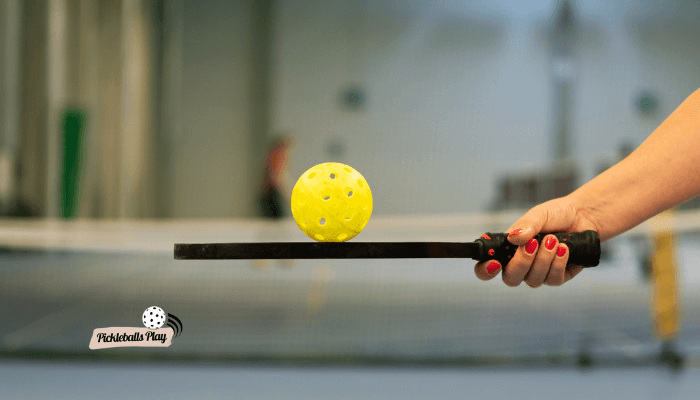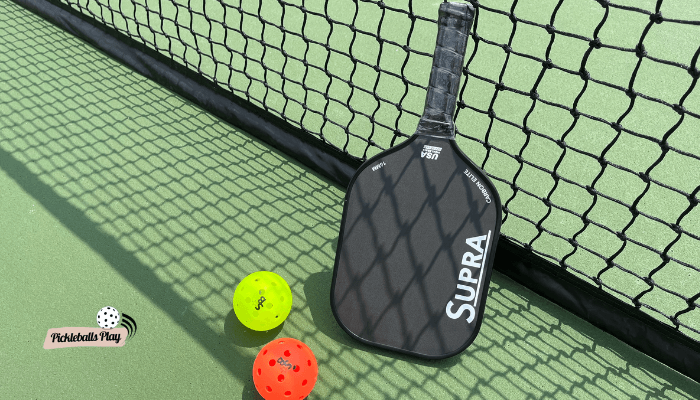Are you new to the exciting world of pickleball and wondering what a foot fault is? Or maybe you’re a seasoned player looking to brush up on the rules. Well, you’ve come to the right place! In this blog post, we’ll break down everything you need to know about foot faults in pickleball, so you can confidently step onto the court and give it your all!
What Is a Foot Fault in Pickleball?

Pickleball has been rapidly gaining popularity in recent years, and it’s a sport that’s all about hitting the ball to your opponent’s side and catching it before it hits the ground. But there’s one rule violation that you need to be aware of – the foot fault. A foot fault occurs when someone steps on their opponent’s ball while capturing it, causing it to fly out of bounds and giving the other team an advantage. So, knowing about foot faults and watching out for them during play is essential for success in pickleball.
The Two Types of Foot Faults in Pickleball
1. A Foot Fault at the Baseline
Also known as a service foot fault, this type of error occurs when a player’s foot touches the baseline before or during their serve. According to Pickleball Rule 18, the server must be positioned at least one foot behind the baseline when serving. If any part of their foot touches the baseline, even slightly, it’s considered a fault. The serving team loses their serve, and the receiving team gets a chance to score.
So, the best way to avoid this foot fault is to always keep your feet behind the baseline while serving. If you find yourself moving too quickly, take a step back to ensure you’re in the correct position.
2. A Foot Fault at the Kitchen Line
This type of foot fault, also known as an NVZ foot fault or non-volley zone foot fault, is more common in pickleball. It occurs when a player’s foot crosses the kitchen line or if their momentum from the ball’s impact propels them inside the kitchen. The non-volley zone rule prevents players from smashing the ball within a specific area close to the net, ensuring fair play for everyone.
If you commit a foot fault while playing a volley and you’re on the receiving team, the serving team scores a point. However, if you make an NVZ foot fault while on the serving team, it results in a side-out, giving the opposing team a chance to serve.
How to Avoid a Foot Fault at the Kitchen Line?
Avoiding a foot fault at the kitchen line is crucial in pickleball. Here are a few tips:
- Stay aware of your surroundings and watch where your opponents are playing to avoid collisions.
- Try to hit the ball softly, so it stays in play and doesn’t go out of bounds.
- Don’t overdo it! Running around too much increases the chances of a foot fault and potential injuries.
Rules of Pickleball Service Foot Faults

Now, let’s take a look at three common foot faults that result in a point being awarded to the opposing team:
- Over-the-Line: When a player crosses the outer edge line of the pickleball court (usually 6 feet from the net).
- Going Out of Bounds on the Service Court: When a player’s service pickup crosses into their opponent’s service box.
- Passing Through Your Opponent’s Service Box: When a player passes through their opponent’s service box without picking up a ball.
FAQs
What is a fault in pickleball?
A fault in pickleball refers to hitting the ball out of bounds, hitting the ball into the net, or committing a foot fault at the baseline or the no-volley zone line.
What is a push-off foot fault in pickleball?
A push-off foot fault occurs when a player loses balance during a volley exchange and uses a hand or paddle to push themselves up from the ground, resulting in an error.
What are the two rules for a fault in pickleball?
The two rules for a fault in pickleball are when a serve does not land within the receiving court, and the ball ends up in the net when serving or returning. Additionally, volleying occurs before each bounce of the ball.
In Conclusion
A foot fault is a common occurrence in pickleball that can lead to a loss of points. To avoid foot faults, players need to be aware of the different types of foot faults and how to rectify them. It’s also essential to keep track of performance statistics to identify areas for improvement. And, of course, knowing your competitors’ playing tactics can help you stay one step ahead on the court!


